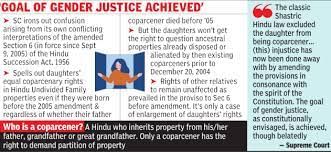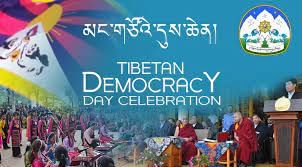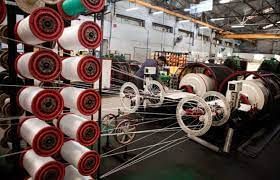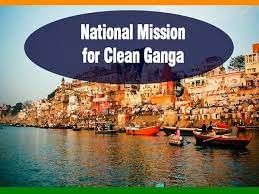UPSC Daily Current Affairs- 2nd September 2023 | Current Affairs & Hindu Analysis: Daily, Weekly & Monthly PDF Download
GS-I
World Sanskrit Day 2023
Subject: Art and Culture

Why in News?
The World Sanskrit Day 2023 was celebrated in Colombo recently.
About World Sanskrit Day 2023:-
- Venue: Colombo.
- Celebrated on: 31st August,2023.
- The event was organized by the cultural arm of the High Commission of India, Swami Vivekananda Cultural Centre (SVCC) in collaboration with 12 universities and institutes of Sri Lanka.
- The event marked the silver jubilee of SVCC.
- It featured a collaborative effort with several prestigious Sri Lankan universities.
Significance:-
- This celebration of Sanskrit underscores the profound cultural and linguistic ties between India and Sri Lanka.
- It emphasizes the importance of Sanskrit as a shared heritage.
World Sanskrit Day:-
- It is an annual celebration observed on the day of Shravan Poornima.
- Shravan Poornima: This is considered to be one of the most sacred days in the month of Shravan and is dedicated to Lord Shiva.
- Historical Background: The Ministry of Education declared World Sanskrit Day back in 1969 on the occasion of Shraavana Poornima.
- On the day of World Sanskrit Day in India, Panini is remembered and honoured for his contribution to this ancient language.
- Panini: a Sanskrit linguist, who wrote the Sanskrit grammar guide named the
About Sanskrit:-
- Sanskrit is among the oldest surviving languages.
- It is said that Sanskrit belongs to the Indo-Germanic or Indo-Aryan family of languages.
- It is around 3,500 years old.
- This makes the Sanskrit language one of the oldest in the world.
- It is a sacred language in several traditions.
- It is a repository of ancient knowledge including the Vedas and other renowned literary works such as the Yoga Shastra.
- It is also known as the mother of many present-day languages such as Hindi and Sinhala.
Source: AIR
In news: Mitakshara Law of Succession
Subject: Indian Society

Why in News?
The Supreme Court clarified that children born from void or voidable marriages can inherit the parent’s share in a joint Hindu family property governed by Mitakshara law.
- However, the inheritance rights are limited to the parent’s share and do not extend to other family members’ properties.
Mitakshara School of Law
| History | Originated in ancient India; attributed to Vijnaneshvara, a 12th-century scholar |
| Focus | Interpretation of Yajnavalkya Smriti in matters of family, property, and inheritance law |
| Ancestral Property | Emphasis on joint family property and ancestral property rights |
| Inheritance | Defines rules for succession and inheritance within Hindu families |
| Variations | Different regional interpretations, including the “Dayabhaga” School |
| Regional Influence | Widespread influence on Hindu legal practices, especially in property law |
| Development | Evolved over time and influenced by legal reforms and societal changes |
| Modern Context | Coexists with contemporary legal frameworks and personal laws |
| Significance | Played a significant role in shaping Hindu family and property law |
Nature of Marriages and Law
- A voidable marriage is made invalid by the husband or wife through a decree.
- A void marriage is invalid from the beginning.
- Mitakshara Law of Succession applies to Hindu Undivided Families across India, except West Bengal and Assam.
Ruling Details
- The Supreme Court, headed by Chief Justice D.Y. Chandrachud, clarified that the child from a void or voidable marriage cannot claim rights to other family members’ properties.
- The child’s inheritance rights pertain only to the parent’s share in the ancestral property.
- A “notional partition” is conducted to ascertain the parent’s share immediately before their death.
Inheritance Calculation
- The law assumes a partition of the ancestral property between the deceased parent and other family members before the parent’s death.
- The child’s inheritance is based on the share the parent would have received through this notional partition.
Legal Basis
- Section 16 of the Hindu Marriage Act grants legitimacy to children born from void or voidable marriages.
- The court held that these children have the right to their parents’ property.
- The intent of granting legitimacy to such children in the Hindu Marriage Act is reflected in the Hindu Succession Act.
Impact of Amendment
- The Hindu Succession (Amendment) Act, 2005, allows a deceased person’s share in a joint Hindu family property to devolve to heirs by testamentary or intestate succession.
- Before the amendment, devolution occurred only through survivorship.
- Equal rights of succession are now granted to women as well as men.
Background and Precedents
- The case was centered on Section 16(3) of the Hindu Marriage Act.
- In 2011, a Division Bench of the Supreme Court championed the rights of children born from illegitimate marriages to inherit their parents’ properties.
- The Division Bench emphasized that these children deserve the same rights as those born from valid marriages.
Conclusion
- The concept of legitimacy evolves with changing social norms.
- The court observed that what was considered illegitimate in the past may be legitimate today.
- Children born from void or voidable marriages should not be denied inheritance rights based on evolving social consensus.
Source: The Hindu
GS-II
India’s growing mental health issues
Subject: Governance

Why in News?
The Standing Committee on Health and Family Welfare recently tabled its report on ‘Mental Health Care and Its Management in Contemporary Times’ in the Parliament.
Highlights of the report:
- The report defines mental health as a state of well-being that enables people to cope with the stress of life.
- It highlighted that the mental health-related issues are rising in India and the country lags with inadequate staff, medical infrastructure and budgetary allocation.
- The Committee stated that India currently has 0.75 psychiatrists per lakh people, which is significantly low.
- The Committee observed that if India targets having three psychiatrists per lakh people, it will need 27,000 more psychiatrists.
- Global Scenario:
- In 2010, global economic losses of around $2.5 trillion annually were attributed to poor mental health, stemming from diminished well-being and productivity. This will surge to $6 trillion by 2030.
- Inadequate funding: The report highlights inadequate funding for care and research.
- It requires not only increased financial support and expanded psychiatry residency programmes, but also establishment of positions for trained psychiatrists and ensuring an ample number of working psychologists.
Status of mental healthcare
India:
- It is estimated that 6-7 % of the population suffers from mental disorders in India.
- WHO estimates that the burden of mental health problems in India is 2443 disability-adjusted life years (DALYs) per 100 00 population.
- The age-adjusted suicide rate per 100 000 population is 21.1.
- The economic loss due to mental health conditions, between 2012-2030, is estimated at USD 1.03 trillion.
Global:
- As per World Bank, nearly 1 billion people live with a mental disorder and in low-income countries; more than 75% of people with the disorder do not receive treatment.
- Every 40 seconds, a person dies by suicide.
- About 50% of mental health disorders start by the age of 14.
- As per WHO Depression is one of the leading causes of disability and suicide is the fourth leading cause of death among 15-29-year-olds.
- People with mental illness may be subject to the UN Convention on the Rights of Persons with Disabilities (CRPD).
Causes of mental illness:
- Exposure to unfavourable social, economic, geopolitical and environmental circumstances including poverty, violence, inequality and environmental deprivation also increases people’s risk of experiencing mental health conditions.
- Over the past two years, the pandemic-led lockdowns and the uncertainties associated with them have had a detrimental effect on mental well-being
- Early adverse life experiences, such as trauma or a history of abuse (for example, child abuse, sexual assault, witnessing violence, etc.)
- Use of alcohol or drugs, having feelings of loneliness or isolation, etc.
Impacts of poor mental health:
- Impact on relationships: Mental-health conditions during adolescence and young adulthood can have a significantly negative impact on the development of safe and healthy relationships with peers, parents, teachers, colleagues and partners.
- Impact on physical health: A study found that positive psychological well-being can reduce the risks of heart attack and stroke.
- On the other hand, poor mental status can lead to poor physical health or harmful behaviour.
- Depression has been linked to many chronic illnesses.
- These illnesses include diabetes, asthma, cancer, cardiovascular disease, and arthritis.
- Impact on productivity: It impacts a person’s ability to concentrate and engage in productive activities.
Government of India Initiatives:
- National Mental Health Programme (NMHP) in 1982: To ensure the availability and accessibility of minimum mental healthcare for all in the foreseeable future.
- Mental Healthcare Act, 2017: It provides mental healthcare and services for persons with mental illness in India.
- Rights of Persons with Disabilities Act, 2017: The Act acknowledges mental illness as a disability and seeks to enhance the Rights and Entitlements of the Disabled.
- National Suicide Prevention Strategy
- National Tele-Mental Health Programme: To improve access to quality mental health counselling and care services in the country.
- Kiran Helpline: It provides for suicide prevention and can help with support and crisis management.
- World Mental Health Day: To raise awareness of mental health issues around the world and to mobilize efforts in support of mental health.
Source: The Hindu
Financial Action Task Force
Subject: International Relations

Why in News?
Top government sources recently said the Financial Action Task Force (FATF) is deliberating on a set of binding rules to bring fugitive economic offenders across countries to justice.
About the Financial Action Task Force (FATF):
- FATF is an inter-governmental policy-making and standard-setting body dedicated to combating money laundering and terrorist financing.
- Objective: To establish international standards and to develop and promote policies, both at national and international levels, to combat money laundering and the financing of terrorism.
- It makes recommendations for combating financial crime, reviews members' policies and procedures, and seeks to increase acceptance of anti-money laundering regulations across the globe.
- Formation:
- It was established in 1989 during the G7 Summit in Paris to develop policies against money laundering.
- In 2001, its mandate expanded to include terrorism financing.
- Headquarters: Paris, France.
- Membership:
- FATF members include 39 countries, including the United States, India, China, Saudi Arabia, Britain, Germany, France, and the EU as such.
- India became a member of FATF in 2010.
- FATF, as part of its efforts, maintains two types of lists - the greylist and the blacklist.
- Black List:
- Countries known as Non-Cooperative Countries or Territories (NCCTs) are put on the blacklist.
- These countries support terror funding and money laundering activities.
- The FATF revises the blacklist regularly, adding or deleting entries.
- Grey List:
- Countries that are considered a safe haven for supporting terror funding and money laundering are put on the FATF grey list.
- This inclusion serves as a warning to the country that it may enter the blacklist.
- Three countries, North Korea, Iran, and Myanmar, are currently on FATF’s blacklist.
- Consequences of being on the FATF blacklist:
- No financial aid is given to them by the International Monetary Fund (IMF), the World Bank, the Asian Development Bank (ADB) and the European Union (EU).
- They also face a number of international economic and financial restrictions and sanctions.
Source: Tribune India
Tibetan Democracy Day: A Legacy of Struggle and Resilience
Subject: International Relations

Why in News?
Tibetan Democracy Day on September 2 marks the founding of the Tibetan government-in-exile in Dharamshala.
- It signifies the establishment of Tibetan democracy after forced displacement.
Tibetan Govt in Exile: Historical Genesis
- In 1960, a year after Tibetans were displaced, the first elected representatives of the Tibetan Parliament-in-exile were sworn in.
- His Holiness the 14th Dalai Lama’s influence led to the enactment of the Tibetan constitution in 1963, emphasizing democracy.
Role of Central Tibetan Administration (CTA)
- The CTA, based in Dharamshala, manages over 100,000 Tibetan refugees globally.
- It is the heart of Tibetan self-governance and resilience.
- CTA’s Evolution:
- The first women representatives were elected in 1963 under the Tibetan constitution.
- In 1975, the CTA declared September 2 as the founding day of Tibetan democracy.
- The Charter of the Tibetans in exile was adopted in 1991, followed by the Tibetan Supreme Justice Commission in 1992.
CTA’s Functioning
- The CTA, led by the President (Sikyong), operates through departments: Religion and Culture, Home, Finance, Education, Security, Information and International Relations, and Health.
- The Tibetan Parliament-in-exile has 45 members representing various aspects of the Tibetan community.
Leadership Transition
- The Dalai Lama’s shift to semi-retirement led to direct elections of the executive head, Kalön Tripa.
- In 2011, His Holiness delegated political authority to Sikyong, the President of the CTA.
Bodh Gaya’s Role
- In 1960, the first elected Tibetan representatives took their oaths in Bodh Gaya, marking the inception of the democratic system.
- Bodh Gaya played a pivotal role in the early days of Tibetan democracy.
India’s perception of Tibet
- India respects the Dalai Lama as a spiritual leader but does not officially recognize the CTA as a government.
- It balances diplomatic considerations while supporting Tibetan refugees.
Global Recognition
- The US stands as a vocal supporter, with bipartisan backing and specialized coordinators for Tibet.
- While global recognition is limited, Tibetans value India’s consistent support.
Source: Indian Express
GS-III
Technical Textiles in India
Subject: Economy

Why in News?
The Ministry of Textiles recently has approved the Startup Guidelines for Technical Textiles – Grant for Research and Entrepreneurship across Aspiring Innovators in Technical Textiles (GREAT).
- The Guidelines provides thrust in Technical Textiles’ application areas including Agro-textiles, Building-textiles, Geo-textiles, Home-textiles, Medical-textiles, Mobile-textiles, Packaging- textiles, Protective-textiles, Sports-textiles, Smart Textiles using Artificial Intelligence, Internet of Things, 3D/4D Printing among others.
- The guidelines focus on supporting individuals and companies to translate prototypes to technologies & products including commercialization.
About Technical Textiles:
- A technical textile is a textile product manufactured for non-aesthetic purposes, where function is the primary criterion.
- Technical textiles include textiles for automotive applications, medical textiles, geotextiles, agrotextiles, and protective clothing.
- They improve the efficiencies in those sectors of the economy.
- The government has also launched a National Technical Textiles Mission for promoting R&D efforts in technical textiles and their applications.
Status of Technical Textile in India
- India is the second largest producer of polyester in the world and is now emerging as a key player in technical textiles industry contributing to a market size of $ 19 Bn.
- Technical textile accounts for approximately 13% of India’s total textile and apparel market and contributes to India’s GDP at 0.7%.
- The Indian Technical Textiles market is the 5th largest in the world and is rapidly growing, both in terms of value and output.
- India’s exports of technical textiles in 2018-19 is estimated at $ 1.9 Bn, which has grown at a CAGR of 4% over the past four years.
- India’s imports of technical textiles have increased at a CAGR of 8% within the last four years, from $ 1,635 Mn to $ 2,209 Mn in 2018-19.
Challenges in Textile Sector in India:
- Shortage in supply of raw material: Shutting down some units in China and Europe due to pollution issues has resulted in an unprecedented rise in prices of basic raw materials in international markets.
- Pressure to meet stringent social and environmental norms: Failing to comply with environmental regulations can put supply chain in jeopardy, as pressure mounts for the apparel industry to improve environmental compliance efforts.
- Increase in cost of raw material: Prices are increasing after many units in China were shut down due to pollution norms.
- Inflexible labour laws: India’s system of labour regulations is rather complex. There are over 200 labour laws, including a quarter of Central Acts.
- Several labour laws such as the Industrial Disputes Act, 1947 put limitations on firm size and not allow manufacturing firms to grow.
- Uneven regional development: The country’s textile industry is concentrated in a few pockets of Gujarat and Maharashtra in the west and Tamil Nadu and Karnataka in the south.
- A large proportion of workers employed by these units comes from Bihar, Uttar Pradesh, and West Bengal.
- Infrastructural bottlenecks: Poor quality of infrastructure in India has been a major hurdle.
- This results in Lack of efficiency due to manual work being practiced.
- Highly fragmented: The Indian textile industry is highly fragmented and is being dominated by the unorganized sector and small and medium industries.
Government of India initiatives to promote the growth of the Textile Industry:
- National Technical Textile Mission: It seeks to enhance domestic technical textile consumption while establishing the nation as a global leader in the field.
- By 2024, it hopes to increase the size of the domestic market to between $40 billion and $50 billion USD.
- Amended Technology Upgradation Fund Scheme (ATUFS): In order to modernize the textile industry’s technology, the government approved the “Amended Technology Upgradation Fund Scheme (ATUFS)” in 2015.
- The Scheme for Integrated Textile Parks (SITP) aims to help small and medium-sized textile business owners cluster investments in textile parks by providing financial support for the parks’ top-notch infrastructure.
- The SAMARTH (Scheme for Capacity Building in the Textile Sector): The government started the SAMARTH Scheme for Capacity Building in Textile Sector (SCBTS) to alleviate the scarcity of trained people.
- The North East Region Textile Promotion Scheme (NERTPS) is a program that supports all areas of the textile industry with infrastructure, capacity building, and marketing assistance.
- Power-Tex India: It includes innovative power-loom textile research and development, new markets, branding, subsidies, and worker welfare programs.
- The Silk Samagra Scheme seeks to lessen the nation’s reliance on imported silk by enhancing the quality and productivity of domestically produced silk.
- PM Mega Integrated Textile Region and Apparel (PM MITRA) Parks: It aims to integrate the entire textile value chain from spinning, weaving, processing/dyeing, printing to garment manufacturing at one location.
Way Forward:
Technical textiles industry is at a nascent stage in India and hence, holds a vast potential for growth. With the government’s aim to create world class infrastructure in the country, in addition to the implementation of several policies and schemes to boost the textile sector, technical textiles is poised for growth.
Source: The Hindu
Progress track: National Mission for Clean Ganga (NMCG)
Subject: Environment

Why in News?
The National Mission for Clean Ganga (NMCG) aims to clean the Ganga River by treating sewage generated in five major states through sewage treatment plants (STPs) and sewerage networks.
- Over seven years, NMCG has achieved 20% sewage treatment capacity, with a target of 60% by December 2026.
About National Mission for Clean Ganga (NMCG)
| Objective | Restore and rejuvenate the Ganga River and its tributaries, ensuring their ecological and geological health |
| Formation Year | 2014 |
| Nodal Agency | Ministry of Jal Shakti, Government of India |
| Coverage | Encompasses Ganga and its major tributaries |
| Key Areas | Pollution control, riverfront development, biodiversity conservation, afforestation, and public awareness |
| Projects | Ghat and crematoria development, sewage treatment plants, river surface cleaning, and more |
| Holistic Approach | Integrates various government initiatives, stakeholders, and public participation |
| Collaborations | Partnerships with state governments, NGOs, international agencies, and private sector |
| Legal Measures | National Ganga River Basin Authority (NGRBA) established for river protection |
| Significance | Addresses ecological, social, and cultural aspects while ensuring sustainable water quality |
Current and Future Sewage Treatment Capacity
- As of now, NMCG treats about 20% of sewage generated in the Ganga river basin.
- The treatment capacity is projected to reach 33% by 2024 and 60% by December 2026.
- Sewage generation is estimated at 11,765 million litres per day (MLD) across five states: Uttarakhand, Uttar Pradesh, Bihar, Jharkhand, and West Bengal.
Role of NMCG
- NMCG aims to prevent untreated sewage from flowing into the Ganga River.
- The 11,765 MLD projection includes sewage generated within the states but not necessarily flowing into the river.
- NMCG’s plan includes setting up 7,000 MLD sewage treatment capacity by 2026.
Projects and Progress
- STPs and sewerage networks constitute about 80% of the NMCG project.
- By July 2023, functional STPs treat 2,665 MLD, with 1,455 MLD added in the last financial year.
- Delayed projects resulted from land acquisition issues and revisions in Detailed Project Reports.
State-wise Distribution
- Most STPs are in Uttarakhand (36), followed by Uttar Pradesh (35) and West Bengal (11).
- Despite NMCG’s ₹20,000 crore budget, in-principle approval has been given for projects worth ₹37,396 crore, with ₹14,745 crore released for infrastructure work by June 2023.
Positive Water Quality Indicators
- Ganga’s water quality now meets the “prescribed limits of notified primary bathing water quality.”
- The increased dolphin population (2,000 to 4,000) and the presence of Indian carp in cleaner waters show nature’s approval of river improvement efforts.
- NMCG is working on a water quality index similar to the air quality index to better communicate water quality standards.
Conclusion
- NMCG’s progress signifies a positive trajectory in Ganga River restoration, reflected in improved water quality and enhanced aquatic life.
- The mission’s efforts continue to tackle sewage treatment challenges and promote cleaner water resources.
Source: PIB
|
38 videos|5293 docs|1118 tests
|





















